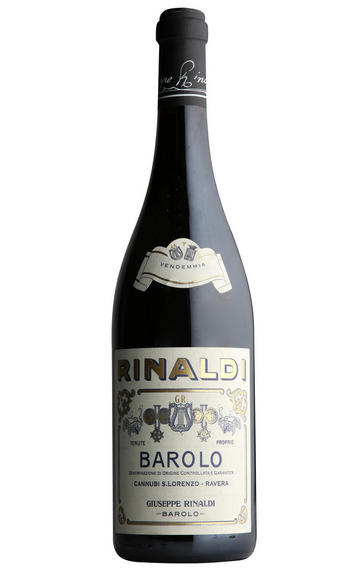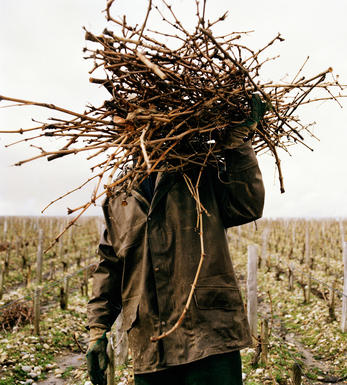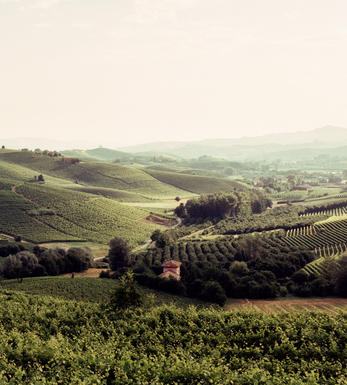
2017 Barolo, Tre Tine, Giuseppe Rinaldi, Piedmont, Italy

Critics reviews
The 2017 Barolo Tre Tine is fabulous. A wine that marries classicism with the racy personality of the year, the 2017 hits all the right buttons. It's a wine that satisfies all the senses, with more than enough to please both the hedonistic and intellectual senses. Everything about the 2017 is spot on. Bright red berry fruit, rose petal, mint, lavender and spice build into the delineated, salivating finish. As always, the Tre Tine is a bit more linear than the Brunate. In 2017, it is one of the wines of the vintage. Don't miss it.
Drink 2025 - 2042
Antonio Galloni, vinous.com (Feb 2021)
The Giuseppe Rinaldi 2017 Barolo Tre Tine was bottled in September 2020, and Carlotta Rinaldi tells me that the wine has gone through various moments of openness and shyness since then. The wine was a little closed when I tasted it this past summer, but its evolution is far from over. As you contemplate the bouquet, you sense lots of fruit, yet there is no excessive ripeness like you might expect from this hot and dry vintage. It shows elegant fruit weight, streamlined and silky, with dried violet, spice and rusty nail. It carries a medium texture that is elongated by the wine's integrated tannins and acidity. Tre Tine is a blend of fruit from Ravera, Le Coste and Cannubi San Lorenzo, and these latter two vineyards were harvested especially early in this vintage, starting on September 13, 2017, which is unusual for Nebbiolo.
Drink 2024 - 2045
Monica Larner, Wine Advocate (Sep 2021)
About this WINE

Giuseppe Rinaldi

Barolo
Located due south of Alba and the River Tanaro, Barolo is Piedmont's most famous wine DOCG (Denominazione di Origine Controllata e Garantita), renowned for producing Italy's finest red wines from 100 percent Nebbiolo.
Its red wines were originally sweet, but in 1840 the then extant Italian monarchy, the House of Savoy, ordered them to be altered to a dry style. This project was realised by French oenologist Louis Oudart, whose experience with Pinot Noir had convinced him of Nebbiolo's potential. The Barolo appellation was formalised in 1966 at around 1,700 hectares – only a tenth of the size of Burgundy, but almost three times as big as neighbouring Barbaresco.
Upgraded to DOCG status in 1980, Barolo comprises two distinct soil types: the first is a Tortonian sandy marl that produces a more feminine style of wine and can be found in the villages of Barolo, La Morra, Cherasco, Verduno, Novello, Roddi and parts of Castiglione Falletto. The second is the older Helvetian sandstone clay that bestows the wines with a more muscular style. This can be found in Monforte d'Alba, Serralunga d'Alba, Diano d'Alba, Grinzane Cavour and the other parts of Castiglione Falletto. Made today from the Nebbiolo clones Lampia, Michet and Rosé, Barolo has an exceptional terroir with almost every village perched on its own hill. The climate is continental, with an extended summer and autumn enabling the fickle Nebbiolo to achieve perfect ripeness.
Inspired by the success of modernists such as Elio Altare, there has been pressure in recent years to reduce the ageing requirements for Barolo; this has mostly been driven by new producers to the region, often with no Piedmontese viticultural heritage and armed with their roto-fermenters and barriques, intent on making a fruitier, more modern style of wine.
This modern style arguably appeals more to the important American market and its scribes, but the traditionalists continue to argue in favour of making Barolo in the classic way. They make the wine in a mix of epoxy-lined cement or stainless-steel cuves, followed by extended ageing in 25-hectoliter Slavonian botte (barrels) to gently soften and integrate the tannins. However, even amongst the traditionalists there has been a move, since the mid-1990s, towards using physiologically (rather than polyphenolically) riper fruit, aided by global warming. Both modernist and traditional schools can produce exceptional or disappointing wines.
Recommended traditionalist producers:
Giacomo Borgogno, Giacomo Conterno, Bruno Giacosa, Elio Grasso, Marcarini, Bartolo Mascarello and Giuseppe Mascarello.
Recommended nmdernist producers:
Azelia, Aldo Conterno, Luciano Sandrone, Paolo Scavino and Roberto Voerzio

Nebbiolo
Nebbiolo is the grape behind the Barolo and Barbaresco wines and is hardly ever seen outside the confines of Piedmont. It takes its name from "nebbia" which is Italian for fog, a frequent phenomenon in the region.
A notoriously pernickety grape, it requires sheltered south-facing sites and performs best on the well-drained calcareous marls to the north and south of Alba in the DOCG zones of Barbaresco and Barolo.
Langhe Nebbiolo is effectively the ‘second wine’ of Piedmont’s great Barolo & Barbarescos. This DOC is the only way Langhe producers can declassify their Barolo or Barbaresco fruit or wines to make an early-drinking style. Unlike Nebbiolo d’Alba, Langhe Nebbiolo can be cut with 15% other red indigenous varieties, such as Barbera or Dolcetto.
Nebbiolo flowers early and ripens late, so a long hang time, producing high levels of sugar, acidity and tannins; the challenge being to harvest the fruit with these three elements ripe and in balance. The best Barolos and Barbarescos are perfumed with aromas of tar, rose, mint, chocolate, liquorice and truffles. They age brilliantly and the very best need ten years to show at their best.


Buying options
Add to wishlist
Description
The 2017 Barolo Tre Tine is fabulous. A wine that marries classicism with the racy personality of the year, the 2017 hits all the right buttons. It's a wine that satisfies all the senses, with more than enough to please both the hedonistic and intellectual senses. Everything about the 2017 is spot on. Bright red berry fruit, rose petal, mint, lavender and spice build into the delineated, salivating finish. As always, the Tre Tine is a bit more linear than the Brunate. In 2017, it is one of the wines of the vintage. Don't miss it.
Drink 2025 - 2042
Antonio Galloni, vinous.com (Feb 2021)
wine at a glance
Delivery and quality guarantee